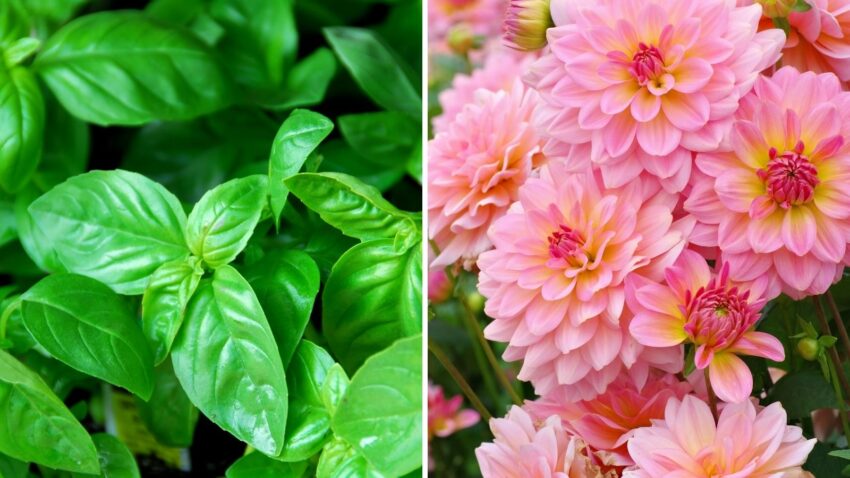If you’re looking to expand your garden and keep your plants multiplying, stem cuttings might be the way to go. There are so many beautiful plants that grow from stem cuttings. Gardening with cuttings can be fun and easy to do. Plus, it will save you money on seeds and supplies. The satisfying feeling of growing a brand new plant using supplies from your own garden is worth the effort.
There are four categories of plant cuttings you can use to grow new plants. Softwood, greenwood, semi-hardwood and hardwood are classifications that speak to the type of plant and stem. These categories can help you determine the best methods and times for cutting and replanting.
No matter which one you choose, raising plants that grow from stem cuttings is a fun and rewarding project for your garden.
1. Hydrangea
Hydrangeas are gentle, bushy flowers that span a variety of colors. They look lovely in yards and gardens.
2. Aster
These adorable purple and yellow flowers radiate classic springtime energy. There are hundreds of species of asters, so you can easily find one that suits your fancy.
3. Butterfly Bush
Butterfly bushes are beautiful, wild-looking and easy to grow. The easier the growing process, the less effort you have to expend when creating your garden.
4. Lilac
Lilacs are yet another purple blooming bush, and they look and smell beautiful in any yard or garden.
5. Basil
Basil smells wonderful and can be abundantly useful in the kitchen. Basil plants are easy to grow and can be used in a multitude of recipes, spicing up your future meals.
6. Gardenia
Gardenia flowers are beautiful white blooms with a wonderful smell, sure to delight any garden visitors.
7. Boxwood
Boxwoods are charming little shrubs that are easy to keep neat and tidy. They’re a perfect plant to garden with or add to a row of pots.
8. Dahlia
Dahlia flowers are unique and striking in their bold, hot pink hues, sure to be the star of any yard they populate.
9. Honeysuckle
Honeysuckle flowers are striking in their appearance. From their branches to their blooms, honeysuckles are natural works of art.
10. Azalea
Azaleas bloom in sweet crowds of bushes, livening up any garden with their stunning raspberry color.
Tips and Hints
The plant that gives you the cuttings is called the mother plant. Look for a healthy house or garden plant. Plants with non-woody stems are easiest to propagate. The mother plant should be large enough that removing one or more cutting will not harm or kill it.
Select green, non-woody stems for taking tip cuttings. Newer growth is easier to root than woody stems. Locate a stem that has a node, the spot on the stem where a leaf is or was attached. It looks like a joint on the stem and it is the area that will generate new roots. Use scissors or a razor blade that has been sterilized in alcohol to make a clean cut, just below a node. The cutting doesn’t need to be very long, a single node with a couple of leaves will be fine.
Preparing Cuttings
After cutting off a piece of the stem, place the cutting on a flat, hard surface and make a clean slice through the middle of the node. Plant stems send out their new roots from the stem nodes. Making the cutting at the node increase your chance of successfully rooting the cutting.
Remove all but one or two leaves. The cutting needs some leaf growth to continue photosynthesis since it can’t take in any food from roots it doesn’t yet have. But too many leaves will sap energy from its efforts to create new roots. If the leaves are very large in proportion to the stem, cut them in half.
Planting Cuttings
Fill a clean plant pot or container with soilless potting mix to hold the cutting. A soilless mix drains better than garden soil and achieves a moist but not wet quality. Additionally, garden soil contains spores and other pathogens that could kill the cutting before it takes root. You don’t need a large container or a lot of potting mix. Once the cuttings take root, you will transfer them to another pot anyway.
With a pencil or similar pointed object, poke holes into the potting mix. Making holes in the rooting medium will ensure that the rooting hormone remains on the plant stem cutting, not on the soil surface. This will improve the chances that the cuttings will root. Be prepared for a few to die off before rooting. Carefully place the cuttings into the holes you made in your potting mix and gently firm the soil around them. You can fit several cuttings into one container, but space them so that the leaves do not touch one another.


